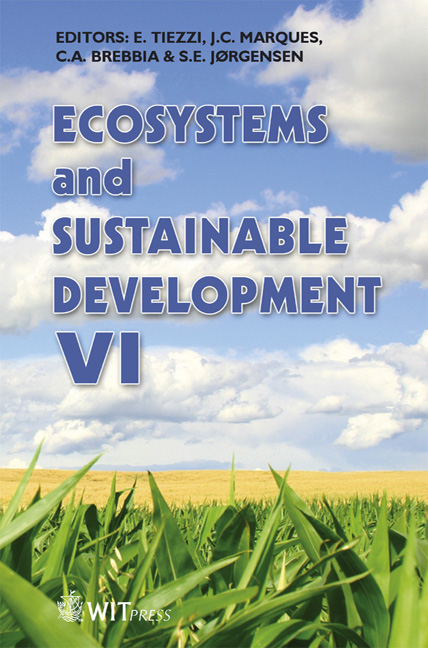Environmental Sustainability Of CO2 Capture In Fossil Fuel Based Power Plants
Price
Free (open access)
Transaction
Volume
106
Pages
11
Published
2007
Size
434 kb
Paper DOI
10.2495/ECO070241
Copyright
WIT Press
Author(s)
A. Franco & A. R. Diaz
Abstract
This paper analyzes various possible options for the chemical capture of CO2 and their energy requirements, focusing attention on the introduction of the devices in well-defined power plant configurations. Capture technologies are proposed and the most suitable technology appears to be chemical absorption. Even if, in principle, this option appears interesting, under an energetic point of view it has a great impact on the thermodynamic performance of the plant, reducing drastically its efficiency. Keywords: CO2 capture, chemical absorption technologies, energy analysis. 1 Introduction Fossil fuels retain the largest market share of the world’s electricity generation, but they are a source of CO2 emissions. These considerations have triggered discussions over the wide use of some fossil fuels, like coal, in order to see if capture and sequestration of CO2 emissions are possible. The aim of CO2 capture technologies is to remove the CO2 presents at the flue gas before it reaches the atmosphere, producing a concentrated stream that can be stored and transported. However, to capture the CO2 produced, a significant amount of energy is required. This means that power plants with capture technology require much more fuel per kWh generated, reducing net plant efficiency [1]. It also results in an increase in most other environmental emissions per kWh of electricity generated, producing a proportional amount of by-products relative to the same type of plant without capture. In addition, there is an increase in the consumption of chemicals, such as ammonia and limestone in De-NOx and De-SO2 technologies. These factors restrict the emissions reduction requirements to a not-always-available thermodynamic performance.
Keywords
CO2 capture, chemical absorption technologies, energy analysis.





